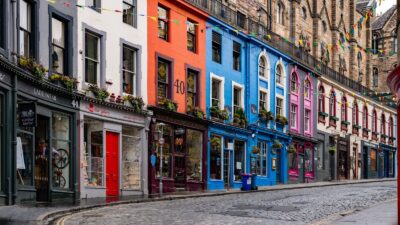I’m having a look around the FTSE 100 sectors and choosing my favourite companies — and today I’m eyeing up the banks.
 Prior to the crash, Barclays (LSE: BARC) was the one I thought strongest. And it still is my favourite — which is why I have it in the Fool’s Beginners Portfolio (which, incidentally, was up 47% at the last check).
Prior to the crash, Barclays (LSE: BARC) was the one I thought strongest. And it still is my favourite — which is why I have it in the Fool’s Beginners Portfolio (which, incidentally, was up 47% at the last check).
Why Barclays? To some extent, it’s a process of elimination — and I started by kicking out the bailed-out pair.
Should you invest £1,000 in Darktrace Plc right now?
When investing expert Mark Rogers has a stock tip, it can pay to listen. After all, the flagship Motley Fool Share Advisor newsletter he has run for nearly a decade has provided thousands of paying members with top stock recommendations from the UK and US markets. And right now, Mark thinks there are 6 standout stocks that investors should consider buying. Want to see if Darktrace Plc made the list?
Still not safe
Royal Bank of Scotland (LSE: RBS) failed to make the cut because it’s really not out of the woods yet, having recorded an £8.3bn pre-tax loss for the year to December 2013. There’s a profit of nearly £1.5bn expected by City analysts for this year — but that’s still small change for the banking business, and there’s no return to any meaningful dividend on the cards just yet.
I’m sure RBS will be back to health before too much longer, but at this stage it’s not quantifiable and it’s impossible to put any real valuation on the bank — and safety is the cornerstone for me.
 Lloyds Banking Group (LSE: LLOY) is back in the land of the living, having recorded a small pre-tax profit for 2013 of around £400m. There are also strong profit forecasts for this year and next. And while the 2014 dividend is likely to yield only around 2%, there’s a hike to better than 4% predicted for the following year.
Lloyds Banking Group (LSE: LLOY) is back in the land of the living, having recorded a small pre-tax profit for 2013 of around £400m. There are also strong profit forecasts for this year and next. And while the 2014 dividend is likely to yield only around 2%, there’s a hike to better than 4% predicted for the following year.
But in P/E terms, Lloyds is more highly valued than Barclays, with a multiple of over 10 based on current forecasts, compared to under 9 for Barclays on its current 240p share price. Lloyds’ higher valuation reflects potential future profits growing faster from a lower base, but I put less value on tomorrow’s jam than a lot of people.
Barclays is cheap
Barclays’ dividend yield should be back up to around 3.7% this year, and as high as 5.2% next year — although I expect the share price will be a fair bit higher by the time December 2015 comes around.
And Barclays was able to attract private investors’ capital when Lloyds and RBS were holding their caps out at the feet of the British taxpayers — which strengthens my feel that Barclays is held in generally higher regard among institutional investors.
The other two?
 Of course, I haven’t mentioned HSBC Holdings (LSE: HSBA) or Standard Chartered (LSE: STAN) yet, so what’s wrong with them?
Of course, I haven’t mentioned HSBC Holdings (LSE: HSBA) or Standard Chartered (LSE: STAN) yet, so what’s wrong with them?
Both of them avoided the crunch by not being heavily invested in dodgy Western property lending — in 2012, HSBC made 35% of its profits from Hong Kong with the rest of Asia making up much of the rest, and Standard Chartered only earned 10% of its profits from Europe and the Americas that year.
But with China’s property market getting pretty hot and signs of a credit bubble growing, there’s a fair bit of potential risk for both these banks — and they’ve both seen their share prices slip over the past 12 months.
So it’s still Barclays for me.







